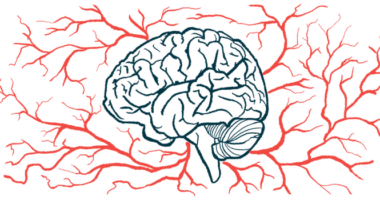CTX001 Continues to Prevent VOCs in People With Severe Disease, Trial Finding

CTX001, an experimental gene-editing cell therapy, safely and effectively increased the levels of fetal hemoglobin and prevented vaso-occlusive crises (VOCs) in three people with severe sickle cell disease (SCD), according to updated data from the CLIMB-SCD-121 Phase 1/2 trial.
CTX001 is being jointly developed by CRISPR Therapeutics and Vertex Pharmaceuticals for hemoglobin-associated diseases, including SCD and transfusion-dependent beta thalassemia (TDT).
These findings, along with positive updated data from the CLIMB-Thal-111 study (NCT03655678) testing the therapy in TDT patients, were recently presented at the 62nd American Society of Hematology (ASH) Annual Meeting and Exposition, held virtually Dec. 5–8.
“We are pleased with the data presented at ASH, which demonstrate potential benefit and durability among a larger population of patients with transfusion-dependent beta thalassemia and sickle cell disease,” Samarth Kulkarni, PhD, CRISPR Therapeutics’s CEO, said in a press release.
“With clinical proof-of-concept for both beta thalassemia and sickle cell disease and 19 patients dosed, we look forward to continued efforts to bring our investigational treatment to patients living with TDT and SCD as quickly as we can,” said Reshma Kewalramani, MD, Vertex’s CEO and president.
CTX001 uses the CRISPR-Cas9 gene-editing tool to modify a patient’s blood cell precursors (hematopoietic stem cells) so that they produce high levels of fetal hemoglobin in red blood cells. Then, the modified cells are re-introduced back into the patient in the form of a stem cell transplant.
By increasing the levels of fetal hemoglobin — a form of hemoglobin found in newborns that transports oxygen more efficiently than its adult counterpart — CTX001 is expected to lower the frequency of VOCs in SCD patients and the constant need for blood transfusions in people with TDT.
This type of approach was “almost unimaginable a few years ago,” said Haydar Frangoul, MD, the medical director of pediatric hematology and oncology at Sarah Cannon Research Institute, HCA Healthcare’s TriStar Centennial Medical Center.
Before receiving CTX001, patients undergo myeloablative chemotherapy, a strategy that kills cells in the bone marrow, thereby lowering the number of blood-forming cells. This way, the stem cell transplant will have better chances of rebuilding a healthy bone marrow.
CTX001 has been designated an orphan drug in the U.S. and Europe, and given fast track, rare pediatric disease, and regenerative medicine advanced therapy designations in the U.S. for SCD and TDT. It was also recently designated a priority medicine in Europe for SCD.
These designations are expected to speed the therapy’s clinical development and review by providing regulatory support and financial benefits, as well as a marketing exclusivity period of seven years in the U.S. and 10 years in Europe upon approval.
The international CLIMB-SCD-121 study (NCT03745287) is evaluating the safety and effectiveness of a single administration of CTX001 in up to 45 people, ages 12 to 35, with severe SCD.
The trial may still be recruiting patients across the U.S., Canada, and Europe, who will be followed for about two years after treatment, and have the opportunity to enter a long-term follow-up study.
Six people with severe SCD have been treated with CTX001 to date, including four who enrolled in the trial since the last update in June.
Newly presented data concerned three patients with at least three months of follow-up after treatment (range, three to 15 months). Findings showed similar response patterns across these people, with fast and sustained increases in the levels of total and fetal hemoglobin, reaching the normal to near-normal range at the last assessment.
In addition, all three patients remained VOC-free since treatment, and bone marrow analysis of two patients with six and 12 months of follow-up suggested that the therapy resulted in durable effects.
CTX001’s safety profile was generally consistent with that previously reported for myeloablative chemotherapy followed by stem cell transplant. There were no CTX001-related serious adverse events, and most of non-serious side effects were mild to moderate.
Similar positive responses were also presented for TDT patients in the CLIMB-Thal-111 Phase 1/2 trial, whose design is very similar to CLIMB-SCD-121. These findings covered seven of the 13 TDT patients treated with CTX001, all with at least three months of follow-up.
These seven patients achieved normal to near-normal levels of total and fetal hemoglobin, and remained blood transfusion-free at three to 18 months post-treatment.
In addition, follow-up data from the first patient receiving CTX001 in each trial were also recently published in The New England Journal of Medicine, in the study “CRISPR-Cas9 Gene Editing for Sickle Cell Disease and β-Thalassemia.”
Results showed that both patients — a 33-year-old woman with severe SCD and a 19-year-old woman with TDT — showed “early, substantial, and sustained increases in fetal hemoglobin levels” over more than one year of follow-up, the researchers wrote. The women with TDT also remained free from a need for blood transfusions, and the SCD patient from VOCs.
These findings “are consistent with an expected survival advantage of [red blood cells] with a high level of fetal hemoglobin,” the team wrote.
Kewalramani noted “these are the first published results from CRISPR/Cas9 therapy in people with a genetic disease,” and said they represent “an important milestone in medicine” and “a critical step in our effort to bring transformative and potentially curative therapies to patients.”
“Together this is further validation of the potential of CTX001 to become a best-in-class therapy,” said Kulkarni. “We plan to continue the rapid advancement of our clinical trials to bring these much-needed therapies to patients.”






